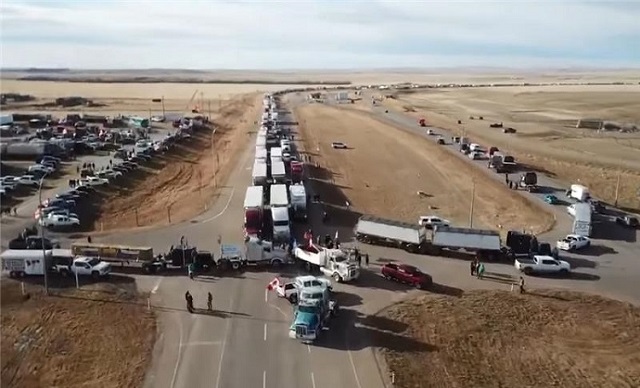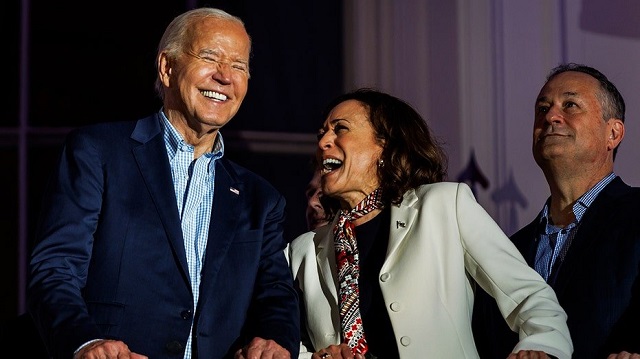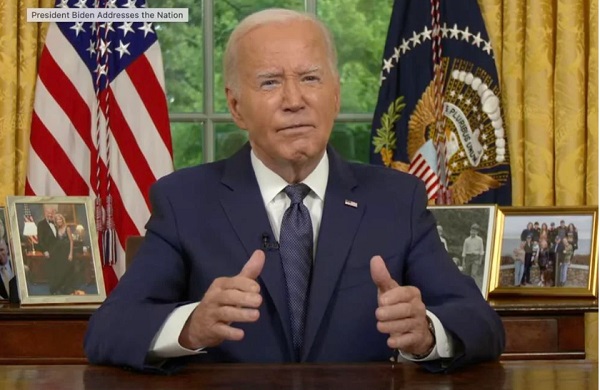Alberta
Alberta’s vision for passenger rail

Alberta’s government will develop a Passenger Rail Master Plan as the foundation to advancing passenger rail in the province.
Since the early days of Alberta’s development, the province has been shaped by the iron rails that crisscross its landscape. The arrival of the transcontinental railway in the late 19th century brought about profound changes to the way of life, facilitating trade, settlement, and economic prosperity. Towns and cities sprung up along the tracks, serving as vital hubs for commerce and transportation.
Today, the legacy of rail continues to shape Alberta and the rest of Canada. While the modes of transportation may have evolved, the spirit of innovation and connectivity remains as strong as ever. As Alberta experiences record population growth and evolving transportation needs, advancing passenger rail infrastructure is essential for enhancing accessibility, efficiency, and connectivity across the province.
Alberta’s Passenger Rail Master Plan will look forward decades and identify concrete actions that can be taken now as well as in the future to build the optimal passenger rail system for the province. The Master Plan will assess the feasibility of passenger rail in the province, including regional (inter-city), commuter and high-speed services.
“A large and efficient passenger rail network stretching across the province has incredible potential. It represents a forward-looking vision and is a mobility solution for our rapidly growing province and I’m excited to watch this plan take shape and bring us into the future. There’s a lot of work ahead of us, but I’m confident that we will build the network Albertans need to improve daily life and work, boost the economy and take away the stress of long-distance travel.”
“Alberta already has significant public mass transit systems in Calgary and Edmonton for the provincial passenger rail system to build upon. The Master Plan will be a vital tool to guide the province on the next steps in advancing passenger rail. It will provide certainty to the rail sector and ensure the most effective use of tax dollars and government authorities. We look forward to hearing from Albertans and working with municipalities, Indigenous communities and the private sector in advancing passenger rail in the province.”
Passenger rail services connected to urban mass transit shapes and strengthens regional transportation systems, connects communities, supports jobs and the economy and improves access to housing.
“Canada’s railways appreciate the Alberta government’s efforts to conduct a fact-based study on the potential for passenger rail service that recognizes the essential need to protect current and future freight rail capacity. Any proposal to co-locate passenger service in freight corridors must demonstrate the ability to preserve the freight rail capacity required to move goods in support of the province’s economy, today and tomorrow. Rail is the greenest mode of ground transportation for both people and goods.”
The government’s vision is for an Alberta passenger rail system that includes public, private or hybrid passenger rail, including:
- a commuter rail system for the Calgary area that connects surrounding communities and the Calgary International Airport to downtown;
- a commuter rail system for the Edmonton area that connects surrounding communities and the Edmonton International Airport to downtown;
- regional rail lines from Calgary and Edmonton to the Rocky Mountain parks;
- a regional rail line between Calgary and Edmonton, with a local transit hub in Red Deer;
- municipal-led LRT systems in Calgary and Edmonton that integrate with the provincial passenger rail system; and
- rail hubs serving the major cities that would provide linkages between a commuter rail system, regional rail routes and municipal-led mass transit systems.
The vision includes a province-led “Metrolinx-like” Crown corporation with a mandate to develop the infrastructure and oversee daily operations, fare collection/booking systems, system maintenance, and planning for future system expansion.
“At VIA Rail our vision for integrated mobility means dreaming of a future where a passenger can easily switch between commuter rail, light transit, transit buses, and regional trains in an agile and simple way. We’ve already initiated a number of exchanges with partners, and we intend to step up the pace in the coming months and years. I can assure you that as integrated mobility becomes an increasingly important topic of conversation in Alberta, VIA Rail will be there to play a unifying role.”
Alberta’s Passenger Rail Master Plan will ensure government has the required information to make decisions based on where passenger rail delivers the best return on investment. The plan will provide a cost-benefit analysis and define what is required by government, including a governance and delivery model, legislation, funding, and staging to implement passenger rail in Alberta. This work will include a 15-year delivery plan that will prioritize and sequence investments.
“We are excited to see the province taking the next step in committing to regional and intercity rail. This Passenger Rail Master Plan aims to set out a vision for a comprehensive rail network in our province that’s long overdue. We are thrilled to see this process move forward.”
The Master Plan will take into account future growth, planning for the growing provincial population and considering the use of hydrogen-powered trains to ensure a robust and effective passenger rail system to serve Albertans for years to come.
Development of the Master Plan will include engagement with Albertans to gain their perspectives for the future of passenger rail in Alberta.
Alberta’s government has released a Request for Expression of Interest to seek world-class knowledge and consultant services as a first step toward the development of the Passenger Rail Master Plan for Alberta. Following this process, a Request for Proposal will be issued to select a consultant to develop the Passenger Rail Master Plan. The Master Plan is expected to be completed by summer 2025.
Quick facts
- Passenger rail includes:
- Commuter rail – passenger rail that primarily operates within a metropolitan area, connecting commuters to a central city from adjacent suburbs or surrounding commuter towns, and is often traditional heavy-rail
- Regional rail – passenger rail that operates beyond the limits of urban areas and provides inter-city passenger rail transport services and can be traditional heavy-rail or high-speed rail
- Light-rail transit (LRT) – urban passenger rail transit that typically operates small, frequent train service in an urban area. Calgary and Edmonton use LRT as part of their mass transit systems
- Passenger rail in Alberta is currently limited to two tourism-focused services, VIA Rail and Rocky Mountaineer, and LRT in Calgary and Edmonton.
- Budget 2024 includes $9 million to support the development of the Passenger Rail Master Plan this year.
Alberta
Alberta awash in corporate welfare

From the Fraser Institute
By Matthew Lau
To understand Ottawa’s negative impact on Alberta’s economy and living standards, juxtapose two recent pieces of data.
First, in July the Trudeau government made three separate “economic development” spending announcements in Alberta, totalling more than $80 million and affecting 37 different projects related to the “green economy,” clean technology and agriculture. And second, as noted in a new essay by Fraser Institute senior fellow Kenneth Green, inflation-adjusted business investment (excluding residential structures) in Canada’s extraction sector (mining, quarrying, oil and gas) fell 51.2 per cent from 2014 to 2022.
The productivity gains that raise living standards and improve economic conditions rely on business investment. But business investment in Canada has declined over the past decade and total economic growth per person (inflation-adjusted) from Q3-2015 through to Q1-2024 has been less than 1 per cent versus robust growth of nearly 16 per cent in the United States over the same period.
For Canada’s extraction sector, as Green documents, federal policies—new fuel regulations, extended review processes on major infrastructure projects, an effective ban on oil shipments on British Columbia’s northern coast, a hard greenhouse gas emissions cap targeting oil and gas, and other regulatory initiatives—are largely to blame for the massive decline in investment.
Meanwhile, as Ottawa impedes private investment, its latest bundle of economic development announcements underscores its strategy to have government take the lead in allocating economic resources, whether for infrastructure and public institutions or for corporate welfare to private companies.
Consider these federally-subsidized projects.
A gas cloud imaging company received $4.1 million from taxpayers to expand marketing, operations and product development. The Battery Metals Association of Canada received $850,000 to “support growth of the battery metals sector in Western Canada by enhancing collaboration and education stakeholders.” A food manufacturer in Lethbridge received $5.2 million to increase production of plant-based protein products. Ermineskin Cree Nation received nearly $400,000 for a feasibility study for a new solar farm. The Town of Coronation received almost $900,000 to renovate and retrofit two buildings into a business incubator. The Petroleum Technology Alliance Canada received $400,000 for marketing and other support to help boost clean technology product exports. And so on.
When the Trudeau government announced all this corporate welfare and spending, it naturally claimed it create economic growth and good jobs. But corporate welfare doesn’t create growth and good jobs, it only directs resources (including labour) to subsidized sectors and businesses and away from sectors and businesses that must be more heavily taxed to support the subsidies. The effect of government initiatives that reduce private investment and replace it with government spending is a net economic loss.
As 20th-century business and economics journalist Henry Hazlitt put it, the case for government directing investment (instead of the private sector) relies on politicians and bureaucrats—who did not earn the money and to whom the money does not belong—investing that money wisely and with almost perfect foresight. Of course, that’s preposterous.
Alas, this replacement of private-sector investment with public spending is happening not only in Alberta but across Canada today due to the Trudeau government’s fiscal policies. Lower productivity and lower living standards, the data show, are the unhappy results.
Author:
Alberta
‘Fireworks’ As Defence Opens Case In Coutts Two Trial

From the Frontier Centre for Public Policy
By Ray McGinnis
Anthony Olienick and Chris Carbert are on trial for conspiracy to commit murder and firearms charges in relation to the Coutts Blockade into mid-February 2022. In opening her case before a Lethbridge, AB, jury on July 11, Olienick’s lawyer, Marilyn Burns stated “This is a political, criminal trial that is un Canadian.” She told the jury, “You will be shocked, and at the very least, disappointed with how Canada’s own RCMP conducted themselves during and after the Coutts protest,” as she summarized officers’ testimony during presentation of the Crown’s case. Burns also contended that “the conduct of Alberta’s provincial government and Canada’s federal government are entwined with the RCMP.” The arrests of the Coutts Four on the night of February 13 and noon hour of February 14, were key events in a decision by the Clerk of the Privy Council, Janice Charette, and the National Security Advisor to the Prime Minister, Jody Thomas, to advise Prime Minister Justin Trudeau to invoke the Emergencies Act. Chief Justice Paul Rouleau, in submitting his Public Order Emergency Commission Report to Parliament on February 17, 2023, also cited events at the Coutts Blockade as key to his conclusion that the government was justified in invoking the Emergencies Act.
Justice David Labrenz cautioned attorney Burns regarding her language, after Crown prosecutor Stephen Johnson objected to some of the language in the opening statement of Olienick’s counsel. Futher discussion about the appropriateness of attorney Burns’ statement to the jury is behind a publication ban, as discussions occurred without the jury present.
Justice Labrenz told the jury on July 12, “I would remind you that the presumption of innocence means that both the accused are cloaked with that presumption, unless the Crown proves beyond a reasonable doubt the essential elements of the charge(s).” He further clarified what should result if the jurors were uncertain about which narrative to believe: the account by the Crown, or the account from the accused lawyers. Labrenz stated that such ambivalence must lead to an acquittal; As such a degree of uncertainty regarding which case to trust in does not meet the “beyond a reasonable doubt” threshold for a conviction.”
On July 15, 2024, a Lethbridge jury heard evidence from a former employer of Olienicks’ named Brian Lambert. He stated that he had tasked Olienick run his sandstone quarry and mining business. He was a business partner with Olienick. In that capacity, Olienick made use of what Lambert referred to as “little firecrackers,” to quarry the sandstone and reduce it in size. Reducing the size of the stone renders it manageable to get refined and repurposed so it could be sold to buyers of stone for other uses (building construction, patio stones, etc.) Lambert explained that the “firecrackers” were “explosive devices” packaged within tubing and pipes that could also be used for plumbing. He detailed how “You make them out of ordinary plumbing pipe and use some kind of propellant like shotgun powder…” Lambert explained that the length of the pipe “…depended on how big a hole or how large a piece of stone you were going to crack. The one I saw was about six inches long … maybe an inch in diameter.”
One of Olienick’s charges is “unlawful possession of an explosive device for a dangerous purpose.” The principal evidence offered up by RCMP to the Crown is what the officers depicted as “pipe bombs” which they obtained at the residence of Anthony Olienick in Claresholm, Alberta, about a two-hour drive from Coutts. Officers entered his home after he was arrested the night of February 13, 2022. Lambert’s testimony offers a plausible common use for the “firecrackers” the RCMP referred to as “pipe bombs.” Lambert added, these “firecrackers” have a firecracker fuse, and in the world of “explosive” they are “no big deal.”
Fellow accused, Chris Carbert, is does not face the additional charge of unlawful possession of explosives for a dangerous purpose. This is the first full week of the case for the defence. The trial began on June 6 when the Crown began presenting its case.
Ray McGinnis is a Senior Fellow with the Frontier Centre for Public Policy who recently attended several days of testimony at the Coutts Two trial.
-

 International20 hours ago
International20 hours agoSecret Service Repeatedly Rejected Offers To Use Drones At Deadly Trump Rally, Whistleblower Says
-

 Alberta1 day ago
Alberta1 day ago‘Fireworks’ As Defence Opens Case In Coutts Two Trial
-

 Business1 day ago
Business1 day agoEstonia’s solution to Canada’s stagnating economic growth
-

 COVID-191 day ago
COVID-191 day agoLeaked documents: German gov’t lied about shots preventing COVID, knew lockdowns did more harm than good
-

 Business1 day ago
Business1 day agoFederal government seems committed to killing investment in Canada
-

 International1 day ago
International1 day agoSwitzerland’s new portable suicide ‘pod’ set to claim its first life ‘soon’
-

 International20 hours ago
International20 hours agoHouse Passes Bipartisan Resolution Establishing Trump Assassination Attempt Task Force
-

 Bruce Dowbiggin13 hours ago
Bruce Dowbiggin13 hours agoGarbage In, Garbage Out: The Democrats 2024 Election Coup








